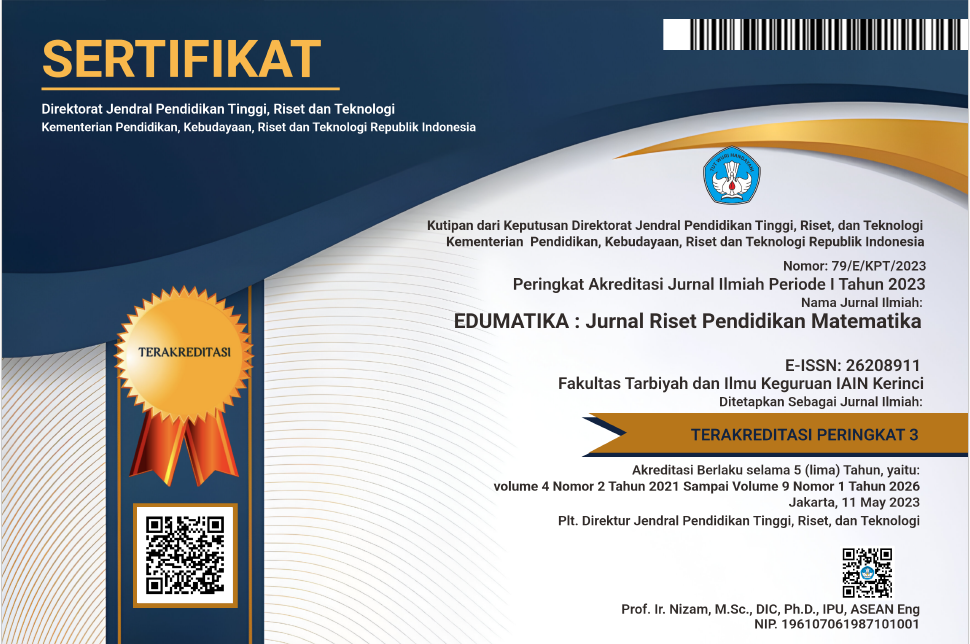[NASKAH TELAH DITARIK]: Pengembangan Modul Pedoman Guru dalam Mendesain Instrumen Penilaian Matematika Berbasis Pemecahan Masalah Matematika
Abstract
Artikel ini telah ditarik dari jurnal Edumatika Volume 2 Nomor 1 Tahun 2019 atas permintaan penulis karena terjadi pengajuan jamak dan telah terbit di jurnal lain.
Downloads
Download data is not yet available.
Published
2019-05-14
DIMENSIONS
How to Cite
Kurniawan, A., Rusdi, M., & Marzal, J. (2019). [NASKAH TELAH DITARIK]: Pengembangan Modul Pedoman Guru dalam Mendesain Instrumen Penilaian Matematika Berbasis Pemecahan Masalah Matematika. Edumatika : Jurnal Riset Pendidikan Matematika, 2(1), 15–22. https://doi.org/10.32939/ejrpm.v2i1.259
Section
All Spectrum of Mathematics Education (Unsorted)
Copyright (c) 2019 author(s) and is published under license from the author(s)

This work is licensed under a Creative Commons Attribution 4.0 International License.















